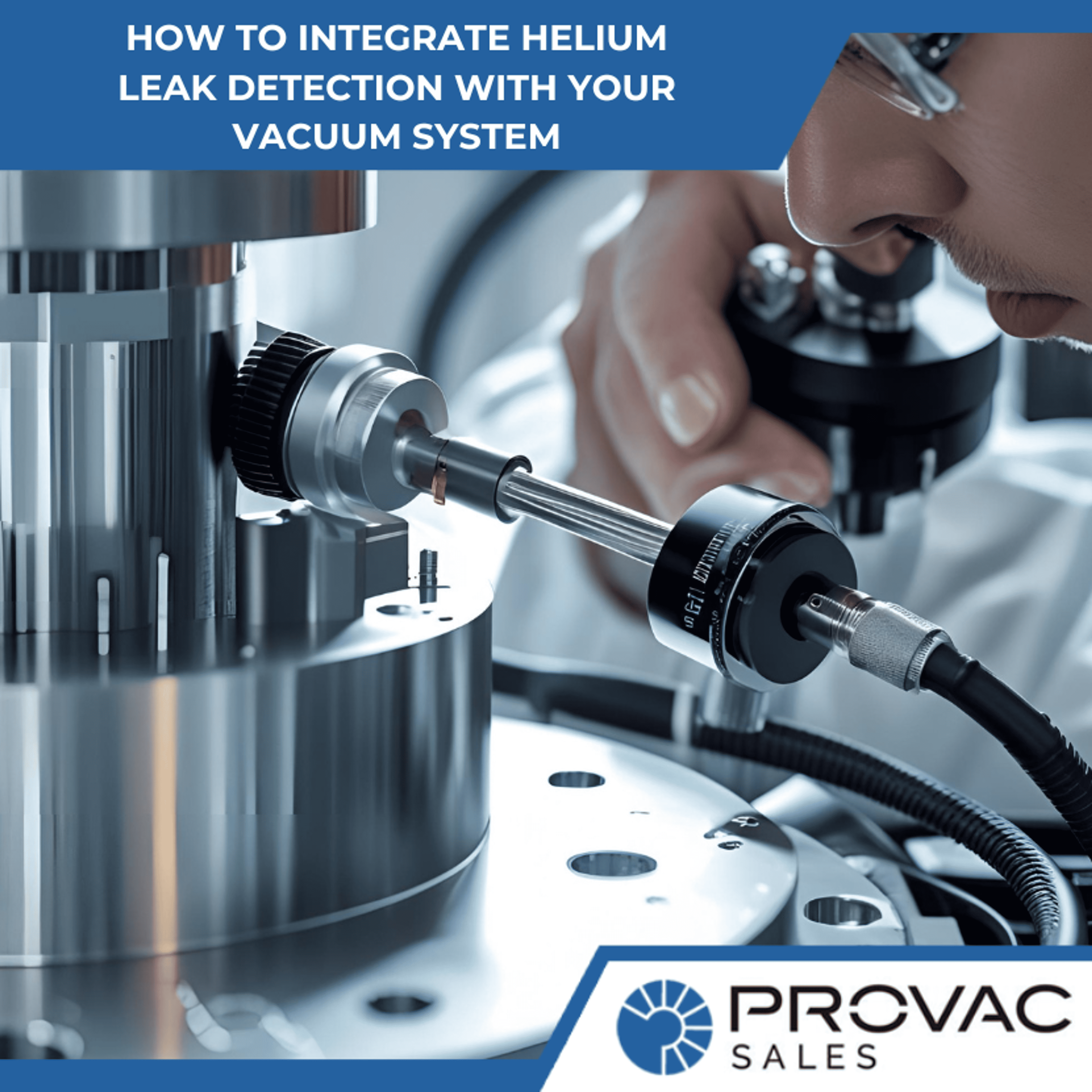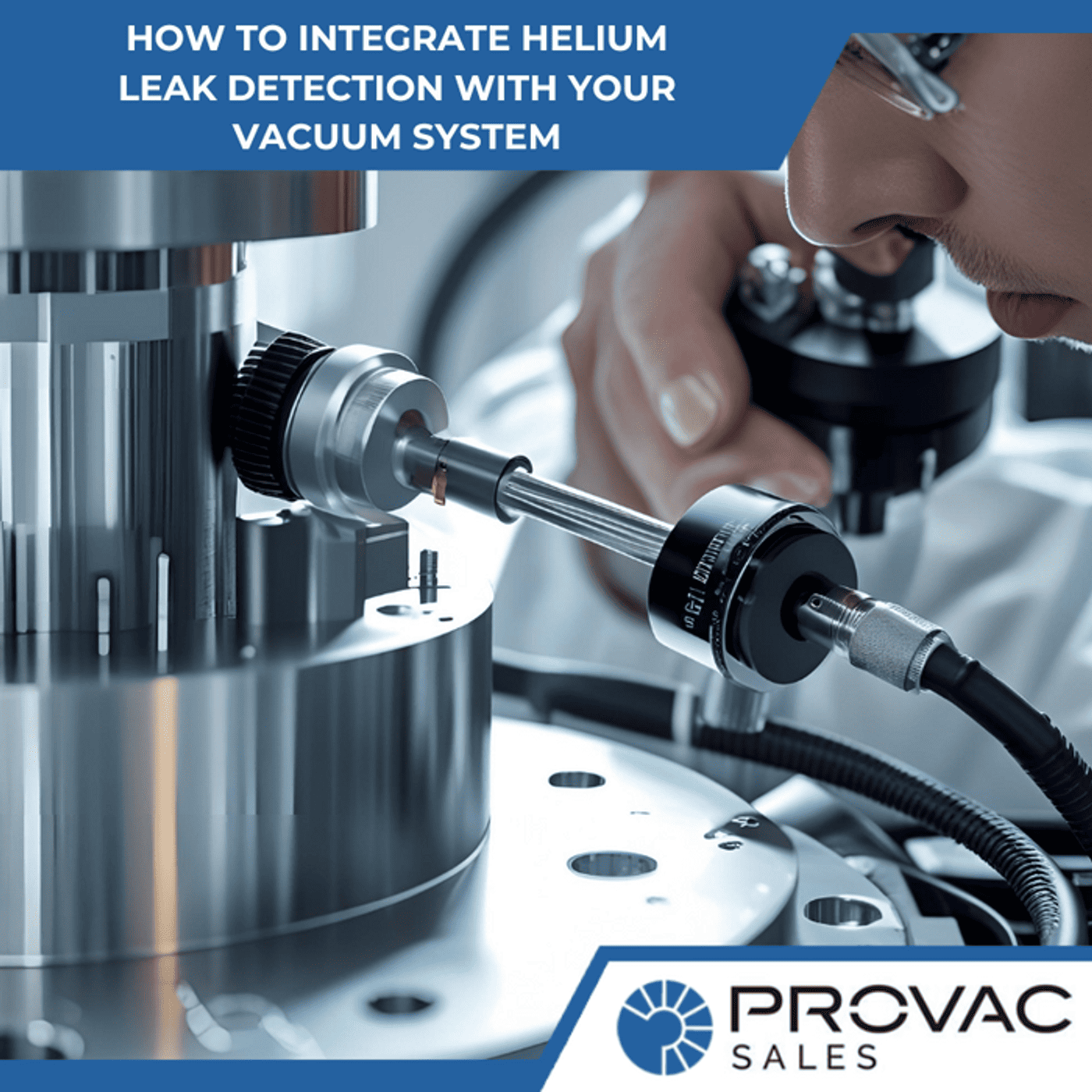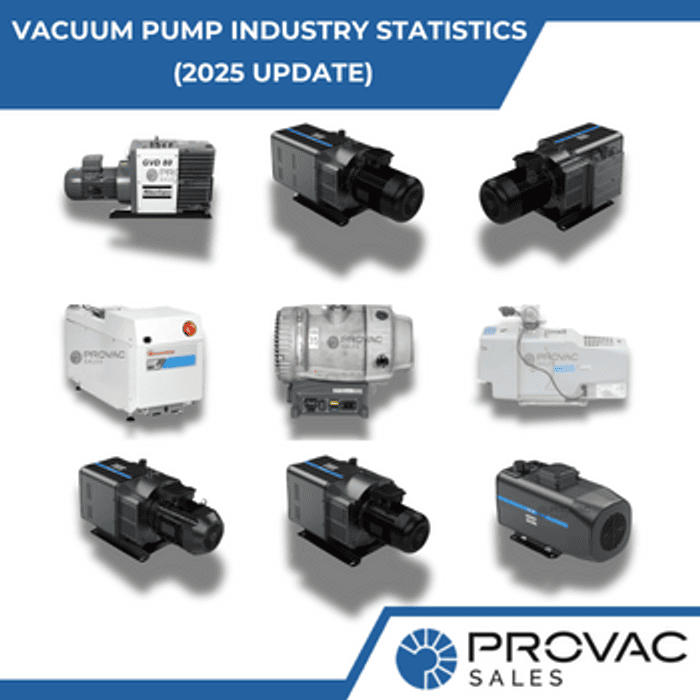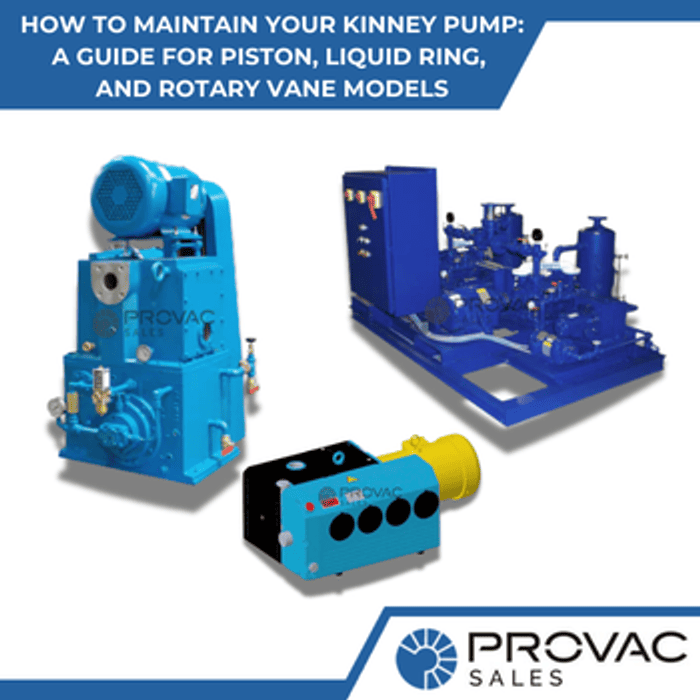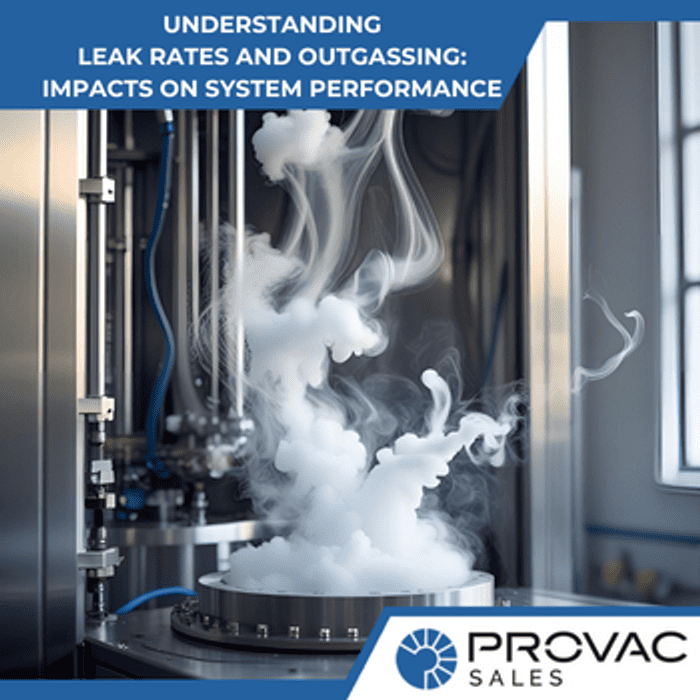When you’re chasing the perfect vacuum, leaks are the last thing you want. Yet, even the tiniest leak can throw your whole process out of whack. That’s where helium leak detection steps in.
At Provac, we’ve seen it all, from the barely-there vacuum leak to the full-blown “why is this thing hissing?” kind of situation.
Why Leak Detection Isn’t Optional
Leaks are sneaky. They creep in through seals, joints, welds, and fittings. And they don’t just mess with your vacuum system, they can sabotage your product quality, contaminate coatings, or wreck throughput. Whether you’re running coating systems, semiconductor tools, or medical packaging equipment, a single system leak can cascade into a production nightmare.
Leak detection isn’t about being paranoid, it’s about being precise. When you can’t see the problem, helium gives you eyes. Thanks to its small atomic size, helium molecules find their way through the tiniest cracks. Combine that with a solid leak detector, and you’ve got a dynamic duo capable of catching issues before they become catastrophes.
Understanding the Basics of Helium Leak Detection
Before we talk integration, let’s cover how helium leak detection works. Here’s the quick version: you pressurize the system (or surround it) with helium, then use a helium leak detector to sniff out where the gas escapes. If there’s a leak, the helium finds it fast.
There are two main approaches:
-
Vacuum Method (Inside-Out): Your vacuum chamber is under vacuum, and helium is sprayed outside. The leak detector is connected to the vacuum side to pick up helium entering through a leak.
-
Sniffer Method (Outside-In): The part is pressurized with helium, and a sniffer probe moves around the exterior, detecting any helium escaping.
Each method has its place, depending on whether your vacuum system is sealed, what your operating vacuum level is, and how accessible the components are.
Choosing the Right Leak Detector
Not all leak detectors are created equal. For high vacuum systems, you need a helium leak detector that can handle ultra-low leak rates and deliver repeatable results. A high-quality leak detector should be:
-
Sensitive enough to pick up leaks as low as 1x10⁻¹⁰ mbar∙L/s
-
Fast in response time
-
Compatible with your vacuum pump system
-
Easy to calibrate and maintain
Let’s not forget practicality. Look for leak detectors that integrate easily with your vacuum gauge and pump controllers. Whether you’re using turbomolecular vacuum setups or a more basic system with portable and mechanical vacuum gauging, seamless integration matters.
Preparing Your Vacuum System for Leak Testing
Before you start spraying helium like a maniac, pause. Your vacuum system needs to be in the right condition for a proper leak test. That means:
-
Clean seals and flanges because debris can mimic a leak
-
Proper vacuum pump performance so your base vacuum level isn’t masking leaks
-
Stable conditions to mitigate pressure fluctuations or outgassing
Now, check the vacuum level. If your vacuum system can’t hit its expected base pressure, you might already have a vacuum leak. This is where using helium makes all the difference. Instead of guessing, you can isolate the issue with targeted leak detection.
Integrating Helium Leak Detection: Step-by-Step
Let’s walk through how to actually integrate helium leak detection into your vacuum system without making a mess of your setup.
Connect the Leak Detector
Attach the helium leak detector to the pump line or directly to the chamber if needed. Some systems have dedicated ports for this, while others may require a T-junction. If you're working with high vacuum setups, position the leak detector downstream of your turbomolecular vacuum pump for optimal sensitivity.
Stabilize the Vacuum
Pump down the vacuum chamber until you hit the operating vacuum level. Make sure everything is sealed. Leaks in vacuum systems can be subtle. Sometimes the chamber hits 10⁻⁵ mbar and stalls. That’s your cue.
Introduce Helium for Testing
If you’re using the outside-in method, gently spray helium around potential leak sites: valves, welds, flanges, feedthroughs. For sealed vacuum systems, apply helium across suspect areas systematically, not randomly. Use short bursts. Going wild with helium can overwhelm the detector and confuse the results.
Monitor the Leak Rate
The detector will display a leak rate, often in mbar∙L/s or atm∙cc/s. A rising value means helium’s entering through a leak. If nothing registers, you may not have a leak, or it’s too small to detect in that area. Keep going until you find leaks in your vacuum system.
Document and Repair
When a leak shows up, mark it, fix it (tighten, reseal, or re-weld), and re-test. Sometimes, new leaks pop up after a fix, so it’s worth doing a full second sweep.
Common Mistakes and How to Avoid Them
Even seasoned techs can hit snags. Here are a few we’ve seen and how to sidestep them:
-
Overusing helium: Dousing your chamber in helium won’t speed up detection—it’ll just saturate the system and confuse your detector.
-
Skipping warm-up: Your leak detector needs a few minutes to stabilize. Don’t rush it.
-
Testing too soon: If your vacuum pump hasn’t reached base vacuum, small leaks may stay hidden.
-
Forgetting to check fittings: Most leaks we find? They’re at the connections. A loose clamp or cracked gasket is a usual suspect.
When to Use Sniffer Probes vs. Full Vacuum Leak Detection
If your system can’t be evacuated or is already filled with process gas, sniffer mode is your friend. It’s also perfect for spot checks on large, hard-to-evacuate equipment. But for precision leak detection in high vacuum tools, full vacuum leak detection is king.
You’ll get a better leak rate reading and can find leaks smaller than a billionth of an atmosphere. That’s overkill for most folks but essential in industries where even a minor gas leak means failed product or regulatory headache.
How Often Should You Perform a Leak Test?
The frequency of leak tests depends on your industry, but here's a good rule of thumb:
-
New installations: Always test before commissioning.
-
Scheduled maintenance: Monthly or quarterly, depending on use.
-
Any time performance dips: Slower pumpdowns or unstable vacuum levels are red flags.
Leak detection systems aren’t just for emergencies. They’re tools for ongoing health checks on your vacuum setup.
Trust Your Tools & Your Process
When it comes to vacuum technology, leaks aren’t a maybe, they’re a matter of time. What matters is how fast you find them and how well you fix them. With the right helium leak detection setup, integrated smartly into your vacuum system, you’ll spend less time chasing ghosts and more time getting results.
Whether you’re using coating systems, operating with sealed vacuum chambers, or running turbomolecular vacuum setups with a mix of vacuum gauge and pump controllers, investing in a solid leak detection plan pays off.
